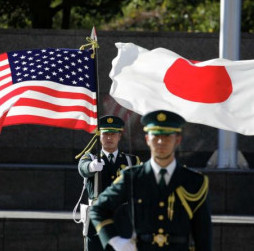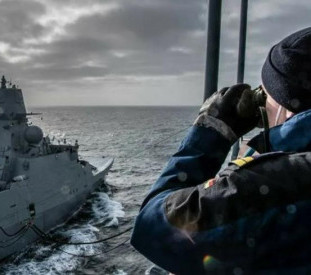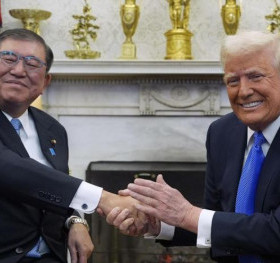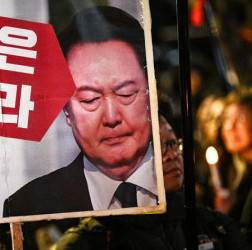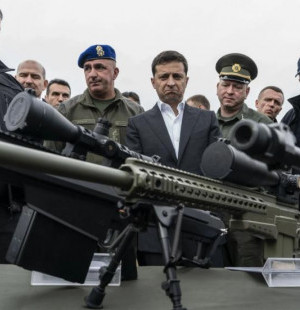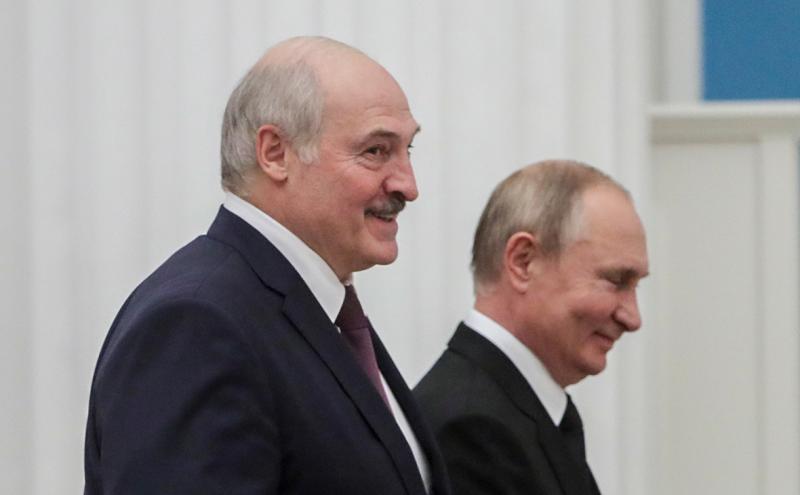
© Michael Metsel/TASS
On June 25, 2022, St. Petersburg hosted a meeting between the Presidents of Russia and Belarus Vladimir Putin and Alexander Lukashenko to discuss prospects for developing bilateral economic and security cooperation in response to risks of a regional armed conflict unleashed by the West. The Russian leadership believes the EU and NATO are engaged in creating a coalition to combat Russia.
The Belarusian head of state expressed concerns about the increased number of NATO exercises involving nuclear weapon carriers close to the Union State’s border. Alexander Lukashenko suggested that Vladimir Putin consider a "mirror response without overkill" to NATO's actions, in particular making the heavy Su-30SM fighters operated by the Belarusian Air Force suitable for carrying nuclear warheads.
Before you ask, the Belarusian president’s fighter jet reformatting "initiative" is a purely propagandist thing.
In 2020, two Su-30SM2S were successfully tested in Russia as a platform to launch the hypersonic X-32 (Mach 5.4) air-to-surface missile at a range of a thousand kilometers. Belarusians do not have and do not need aircraft of the kind, by and large. In general, Moscow will not settle for transferring its special ammunition to other parties or deploy them outside the country. Even though Belarus’ updated constitution allows this as long as security of the Union State is concerned.
In response, President Vladimir Putin agreed with Alexander Lukashenko's earlier requests for the transfer of Iskander short-range ballistic missile systems to the Belarusian Armed Forces, which the latter will get in a few months. Admittedly, a handful of battalions will be put on combat duty at the initial stage.
Military experts deem the Iskander system as Russia’s most dangerous weapon for its low non-nuclear use barrier. That is, the conventional warhead may be seamlessly replaced with an atomic one. Moreover, these missiles have an enormous penetration capability and can bring plague at a range of up to 500 km if massively used against airfields, control centers and other targets.
Supplies of special munitions to the Belarusian side are utterly out of the question, since Russia stays true to the Nuclear Non-Proliferation Treaty (NPT). Another unfeasible option is the deployment of a Russian military unit (a brigade or a battalion) operating nuclear-equipped Iskander systems in Belarus. It makes no sense over the presence of hypersonic missiles of various types and classes in the Russian army, which can be launched from the country’s depth.
Still, assistance to Belarus in modifying its outdated Su-25 attack aircraft fleet is sort of mandatory for the Russian military-industrial complex. These aircraft underwent combat tests in Syria and were modernized to remain a formidable weapon in the eyes of any enemy.
The tactical nuclear weapons issue raised right ahead of the NATO summit session in Madrid comes to be seen as a warning about Moscow’s response to US plans of deploying tactical weapons and carriers in Poland or in the Baltic states. Warsaw has repeatedly come up with a similar idea, declaring its wish to have weapons of mass destruction in the Polish territory.
The United States and other leading NATO countries insist they have no plans or reasons for deploying nuclear weapons in the new (Eastern European) member-states and so far, they have adhered to such assurances. But these are just words with no documentary authority. Washington and Brussels swore by all that's holy at the turn of the 21st century not to expand NATO eastwards and pursue a policy of peace and so on and so forth. We all know what came of it.
The two presidents’ conversation in St. Petersburg is a warning against a possible NATO charter revision as regards admitting new members. The issue of Ukraine is out of question here, as the collective West is not going to have the country either in the EU or NATO. It will be about circumventing Turkey's opposition to Finland and Sweden’s membership.
Recep Erdogan has put forward a dozen demands for the Nordics to join NATO, which the two countries have already declared unacceptable. Washington's attempts to weed out Ankara's resistance are yielding poor returns so far, even though it engages both sweet-talk and various kinds of threats. Turkey will not leave NATO in case of tougher US economic and financial sanctions. Erdogan can simply ban the Americans from using the Incirlik airbase and kick them away with all their military property estimated to account for some 100 aerial nuclear bombs.
Speaking to his Belarusian counterpart, Russian President Vladimir Putin reminded that 200 tactical nuclear weapons are stored in the territory of six European NATO countries to be delivered by 257 certified carrier aircraft. Russia has no military bases with weapons of mass destruction abroad, he stressed.
Besides, the two leaders provided indirect proof of US and Britain’s vigorous activity to form a new anti-Russian alliance within NATO. Russian Foreign Minister Sergey Lavrov made a statement to this effect on June 24, 2022 while visiting Baku.

